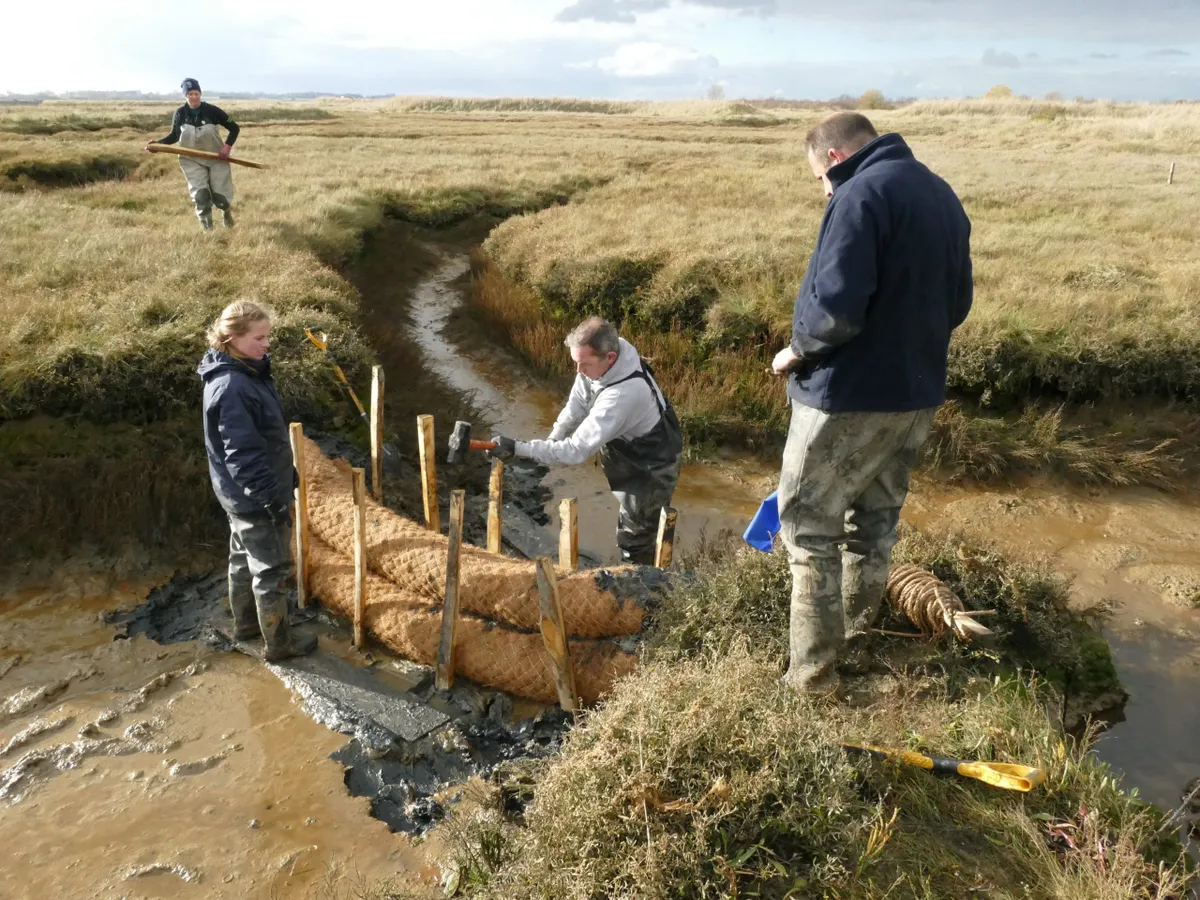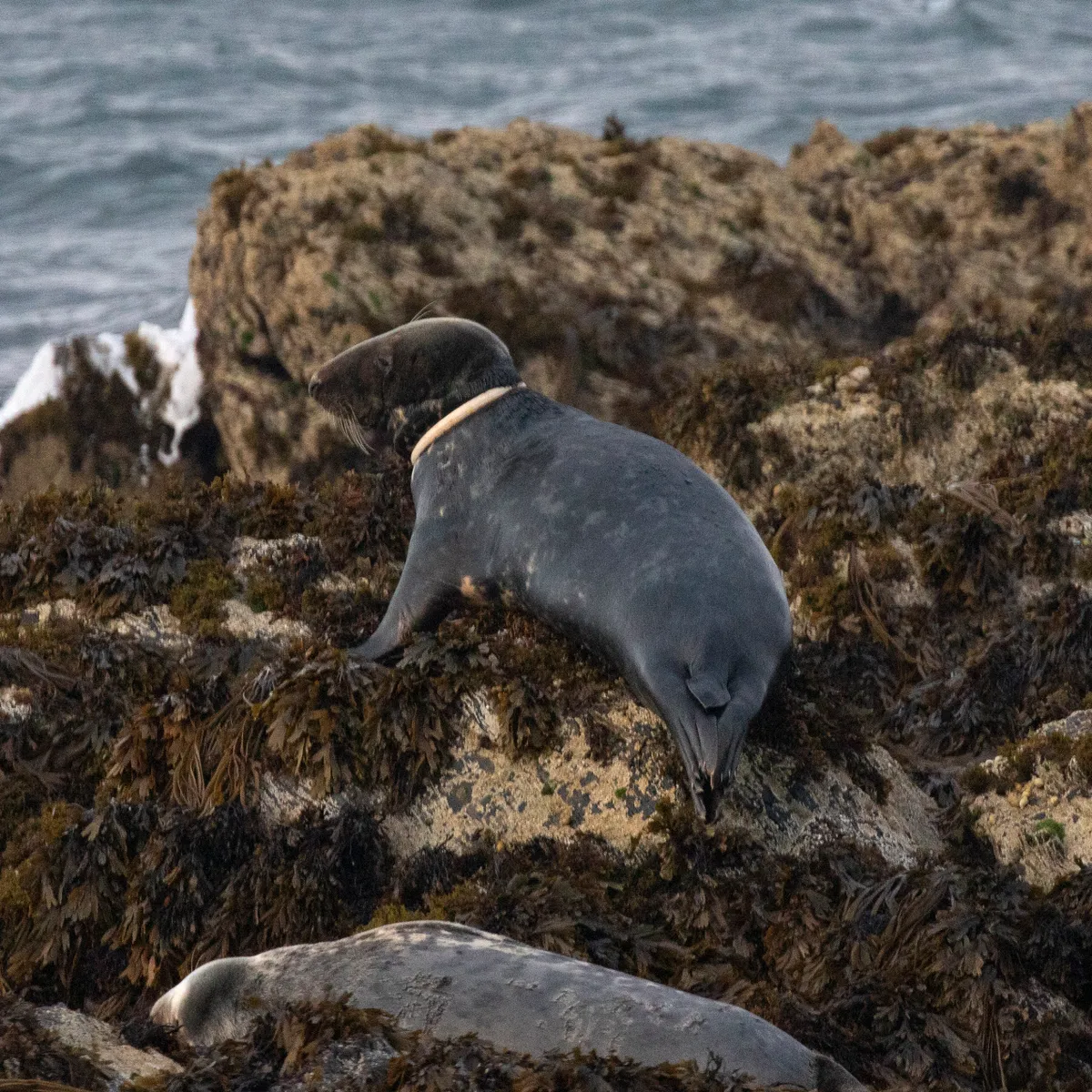InIn a time of turbulence and uncertainty for wildlife, 2019 saw marine and coastal volunteers and conservationists pool their efforts into enacting positive change for the UK’s marine wildlife.
Positive engagement
Some of the past year’s notable marine highlights include a new project launched to record cetaceans off the Yorkshire coast; the restoration of precious saltmarshes; and the announcement of 41 new Marine Conservation Zones.

The newly created Marine Conservation Zones — backed by almost 298,000 people — will bring the total to 91 in the UK, meaning greater protection for marine wildlife up and down the country. “The announcement of new Marine Conservation Zones marked a watershed in our battle to protect our seas,” commented Joan Edwards, The Wildlife Trusts’ Director of Living Seas.
In Scotland, proposals for a further protected area for basking sharks in the Sea of Hebrides has been supported by The Scottish Wildlife Trust, in a plan that was backed by more than 3000 people.
Thousands more gave their support to The Wildlife Trusts’ Living Seas by way of volunteering their time.

Notably, last year saw a new citizen science project run by The Yorkshire Wildlife Trust complete its first successful year. The Trust trained 30 volunteers to become the ‘eyes and ears’ of the coastline.
Over the year, volunteers recorded 320 individual sightings of cetaceans including minke whales, bottlenose dolphins, and harbour porpoises.
“Ten years ago, seeing a bottlenose dolphin off the Yorkshire coast would have been rare,” said Bex Lynham, North Sea Wildlife Trusts’ marine advocacy officer.
“We need to collect more data about how and why they are using these waters if we are to better protect them. The role of citizen scientists in recording these animals, as well as changes in the marine environment is really important.”

Further south, a seal was discovered ‘commuting’ between the Isle of Man and Cornwall. The seal, nicknamed Tulip Belle, has been a regular visitor to the South West since 2001, returning to the Calf of Man every couple of years to have her pups. Prior to this discovery, it was thought that seals did not travel as far as Cornwall.
Species doing well
At South Walney nature reserve in Cumbria, the grey seal colony enjoyed a record year, with more seals than ever before. There were 483 seals including 7 pups in 2019, compared to 360 in 2018. This is a dramatic increase from 1981, when there were only two seals, with the first pups being born years later in 2015.
There was more positive news from Ulster Wildlife Trust, which reported a great year for the critically endangered common skate, which can live for up to 100 years.
Sandwich terns at Cemlyn Bay nature reserve in North Wales also enjoyed a good year. More than 1000 pairs bred here, with around 800 chicks fledging, compared to just 500 pairs in 2018, with around 180 chicks fledging.
On Handa Island Wildlife Reserve in Scotland, 8,207 razorbills were counted — the highest number recorded since 2006. Although this is a marked improvement, the population is still struggling, with their numbers having declined from over 16,000 since the early 2000s.
Wildlife disturbances
Kittiwakes on the Isles of Scilly also continue to struggle, with their population seeing a dramatic decline of 87% since 2006. Last year, around 20 kittiwake nests were recorded on the island of Gugh, but there were no surviving chicks. Reasons for their demise are suspected to be due to severe storms during breeding season, regular visits from peregrine falcons, and people disturbing birds.
Several Trusts reported increased incidents of disturbances to wildlife over the course of the year, such as jet skis frightening dolphins, kayakers disturbing seals, drones alarming wildlife, and an increase of tripper boats. 2018 and 2019 saw the highest numbers of dolphin disturbances reported to Cornwall Wildlife Trust’s Disturbances Hotline since monitoring began in 2013. “People don’t realise how vulnerable animals such as dolphins and seals are to human activity,” explains Joan Edwards, The Wildlife Trusts’ Director of Living Seas.
“We share the seas with nature and need to leave space for marine wildlife – it’s important that people keep a good distance from animals and seabirds and avoid kayaking, jet skiing or boating near to animals, and avoid mothers and their young.”

Mitigating environmental damage
But humans continued to work toward positive changes along the coast. During 2019, charity Fishing For Litter saw fishermen collect 27 tonnes of marine waste, more than 5000 volunteers were involved in citizen science and beach cleans nationwide, and Shoresearch citizen scientists completed over 95 surveys, recording marine wildlife and submitting data to national records centres. During 2019 Wildlife Trusts organised 450 beach cleans, along with many more independently-run beach cleans.

Next year, beach cleans will continue to be a vital means of helping to monitor litter and help wildlife along the coastlines, as plastic, nurdles, and discarded fishing gear continuing to be a major threat to marine wildlife.
Climate change also remains a threat to native ecosystems. 2019 saw the continued spread of the non-native Pacific oyster as sea waters warm. Solid Pacific oyster reefs are forming in some areas, smothering intertidal gravel and mudflats, making it harder for some birds and young fish to forage.
In a bid to reestablish natural ecosystems, last year native oysters were reintroduced to the Humber estuary for the first time since the 1950s.
Conservation efforts also focused on restoring vital saltmarsh habitats, which provide a natural carbon storage solution and provide protection against flooding from storm surges. The first winter fish survey took place last year, and discovered that new species such as the thin lipped grey mullet have begun to use newly created saltmarsh at Fringinghoe Wick, along with other marine creatures including gobies, shrimp, bass, sea gooseberries, and jellyfish being recorded at Two Tree Island saltmarsh.
Although humanity’s activities are widely known to have a devastating effect on the natural world, highlights from The Wildlife Trusts’ marine wildlife report 2019 demonstrate that people can play a big roll in mitigating these effects, and help to restore nature to its natural state.
“2019 saw a sea-change in people’s attitudes,” commented Joan Edwards. “The extent of the nature and climate emergency is becoming increasingly clear and more people than ever are volunteering to be citizen scientists and conducting important surveys or taking action to tackle the profound problems of marine litter and plastic pollution.
“They’ve shown their commitment to healthy seas by supporting The Wildlife Trusts’ campaigns to ensure government policies create more and better protection for marine wildlife and waters around the UK.”
